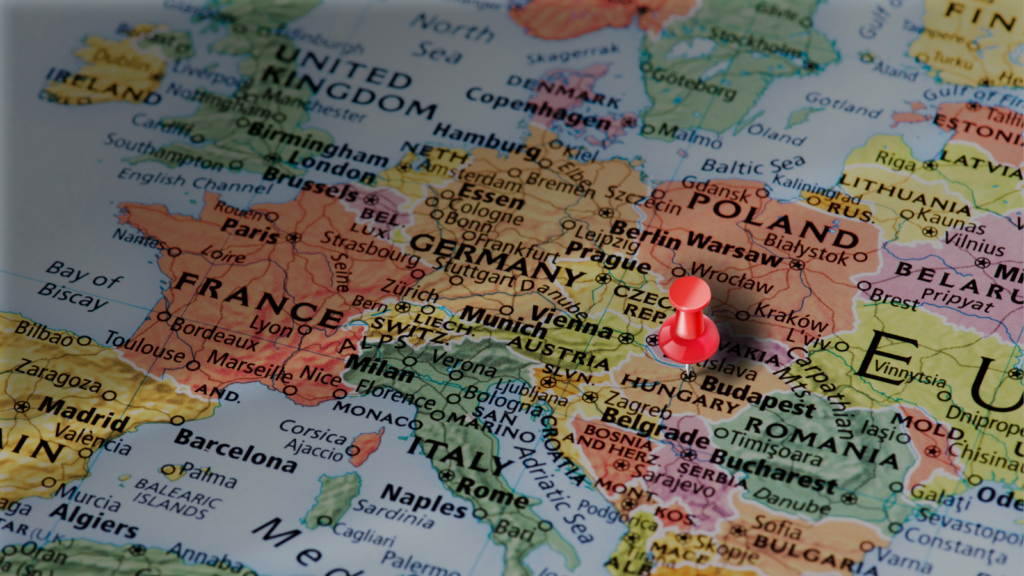Germany – specifically, its automotive industry – is Europe’s true Achilles heel when it comes to China policy.
Xi Jinping’s visit to Hungary, the final stop of his three-country tour of Europe, came amid the EU’s increasing concerns about his friendship with Hungarian Prime Minister Viktor Orban (as well as Serbian President Aleksandar Vucic, who hosted Xi just before Orban). In the ensuing discussions, the notion of Central and Eastern Europe (CEE) as China’s “Trojan Horse” may well be brought back into the spotlight. It is thus useful to assess how accurate this metaphor has ever been in depicting Sino-Hungarian relations, let alone CEE-China relations more broadly.
The China-CEE platform, also known as the 17+1 (or in its current format as the 14+1), has long been criticized for granting China political leverage through economic means over the EU. The last few years have seen most of the CEE EU member states renegotiating their relations with China, however. Such concerns no longer apply to most of these states, with Orban’s warm relations with Xi effectively turning Hungary into a regional outlier.
Putting aside Orban’s utilization of his relations with China for intra-EU politicking, however, there are several problems with the “Trojan Horse” metaphor, especially when applied uncritically across all domains of Sino-Hungarian relations. For starters, it implies that China’s influence did not exist in Europe prior to the 17+1. In fact, the influence was there long before, with China seeing both Germany and France as its partners in the economic and security domains. This has, of course, changed, at least judging by French President Emmanuel Macron’s support for de-risking the EU economy and strengthening the bloc’s defense (the latter of which is unlikely without the role of NATO, which the French president was previously critical about).
Such a change of heart and mind has, however, occurred across most of CEE as well, aligning both Paris and several CEE capitals (at least the ones situated within the EU) with Brussels’ increasingly skeptical stance on China. There are, of course, limits to the proclaimed change even at the EU level. The change seems to be limited to the “de-risking” and “strategic autonomy” narratives, and even these imply the prospect for rapprochement with China, at least from Beijing’s perspective.
The “Trojan Horse” metaphor itself seems to be based on discursive rather than material realities, with some researchers inclined to take the statements of politicians and government officials at face value. From this perspective, it is easy to overestimate the importance of statements by populists like Orban and underestimate the actions of statesmen like Germany’s Chancellor Olaf Scholz.
When it comes to economic matters, however – including Chinese EV investments in Hungary that have prompted new concerns about their potential mismatch with the EU’s de-risking agenda – it is important not to forget Hungary’s position in the broader automotive value chains, and the ensuing structural constraints on the foreign policy agency of its elites. This is, of course, not meant to excuse any actions by the Fidesz government that undermine the EU’s foreign policy, but rather to bring further nuance into the discussion of the EU’s China policy and the respective roles of its members in shaping the contours of this policy.
Periphery of the European Automotive Industry
Considering the dependency of CEE economies on the automotive industry and the EU’s push for its green transition goals, most CEE countries have quickly realized the necessity of their respective transitions to electromobility. This is certainly so in the case of the V4 states (Czechia, Hungary, Slovakia, and Poland), all of which became major manufacturing hubs for German automakers thanks to the offshoring of their manufacturing facilities abroad. This has led to the high embeddedness of the V4 economies in the supply chains of German carmakers, making the countries’ economic growth dependent on automotive-related FDI.
With China being a leader in the global EV transition, the ongoing competition between the four states in attracting Chinese EV-related investments is not surprising. Neither is the selection of the V4 for the EV-related investments of Chinese companies in Europe. Chinese car companies’ need to establish manufacturing facilities in Europe is likely to increase amid the EU’s anti-subsidy investigation into the imports of EVs made in China.
As the V4 states need to attract EV-related FDI to ensure further growth of their respective economies, the competition for hosting the individual Chinese plants is also likely to intensify, especially considering that by doing so the states can generate more added value. This is relevant precisely due to their strengths in lower (rather than higher) value-added processes, such as manufacturing and assembly. The attractiveness of the V4 states becomes even clearer when considering not just the states’ lower labor costs and manufacturing strengths but also their geographical proximity to Chinese companies’ European partners, suppliers, and customers, which are predominantly German.
Most of the Chinese EV-related investments in the V4 were announced over the last two years, with Hungary having attracted the largest number of such investments, especially in EV component (including battery) manufacturing. The most noteworthy project is the CATL battery plant in Debrecen that was announced in August 2022 and is currently under construction. Once built, it will not only be the biggest Chinese investment in Hungary (worth 7.3 billion euros), but a major step toward Orban’s plan of turning Hungary into the EU’s production hub for EV batteries.
Here, it is important to note, however, that the plant’s major beneficiaries will be German companies, particularly Mercedes as its biggest customer. A majority of the leading car manufacturers in Hungary are subsidiaries of German companies, and, since the V4 states specialize in lower value-added activities, most of the profits flow to the parent companies in Germany. Moreover, BMW (another German carmaker with several production facilities in both CEE and China) played an important role in CATL’s development as the global leader in battery manufacturing, highlighting Germany’s major role in the China-Germany-CEE supply chains.
German Capital as the EU’s ‘Achilles Heel’
Going back to the EU’s China policy, the processes of uneven and combined development within the core-periphery structure of the European automotive value chains (with Hungary and other V4/CEE states being at its periphery), alongside the division of labor within China-Germany-CEE production networks, significantly limit Hungary’s agency in defining the policy.
Instead, as seen in the disagreements between Germany and France with regards to the EU’s anti-subsidy probe into the imports of Chinese EVs (France being for an investigation, and Germany against it), it is a specific configuration of class interests within the core European powers that determines the EU’s China policy.
Due to the dependency of its carmakers on the Chinese market and their significant role in driving Germany’s relations with China, Germany tends to take a stance against measures that could be deemed as protectionist, acting as a defender of neoliberal values instead. On some occasions, however, the divergent interests within German export industry vis-à-vis the unevenness of global capitalist development have led the state to adopt a more protectionist approach, with Germany’s plan to subsidize the announced TSMC construction of a semiconductor foundry in Dresden being a good example of this.
The German Mittelstand that effectively stands for small and medium-sized enterprises (SMEs) and is represented by the Federation of German Industries (BDI) tends to be more critical of China than the large enterprises. In fact, not only is the BDI supportive of the EU’s de-risking agenda but its 2019 report that described China as a “systemic competitor” preceded the EU’s famous triptych of China as a partner, competitor, and rival. There are also diverging views between Germany’s main export sectors, with the rather uncritical approach toward China being associated with the big corporations in the automotive industry.
The latter are the class interests behind Germany’s opposition to the EU’s anti-subsidy probe. Indeed, they are the ones most frequently represented by the Scholz cabinet, as was on full display during the chancellor’s April visit to Beijing. Not only did Scholz seem to downplay the threat posed by subsidized Chinese EVs to their European competitors, but the visit was followed by the two countries signing a data sharing agreement in the development of autonomous cars, thus further undermining the EU’s de-risking agenda.
Beware the Sino-Hungarian Security Cooperation
Of course, this does not mean that Budapest does not enjoy any agency in its relations with Beijing, nor that Sino-Hungarian economic relations should not be scrutinized. The significant financial struggles of the Fidesz government and its inability to access most of its EU cohesion funds due to its rule of law violations mean that Orban is likely to further double down on its economic ties to China while expanding the relationship into new domains.
Indeed, Xi’s stop in Budapest was long expected to include not only announcements of further Chinese investments into infrastructure and EV projects, but also a further discussion of the security cooperation agreement signed in February between the two states. Although the details of this agreement still remain unclear, it is of particular concern. The agreement is alleged to facilitate the presence of Chinese police officers in Hungary, which would effectively enable direct surveillance of the Chinese diaspora – not just in Hungary but across the EU.
Because of this, Hungary may well become China’s “Trojan Horse” in (both traditional and human) security matters, which is concerning considering the country’s upcoming presidency of the Council of the EU. Yet, it is Germany that plays the role of the EU’s “Achilles heel” when it comes to the bloc’s economic relations with China. After all, considering its position within the EU, it is only after Germany changes its course that a more substantive (not just rhetorical) change in the EU’s China policy may follow.
The article was originally published by The Diplomat.







